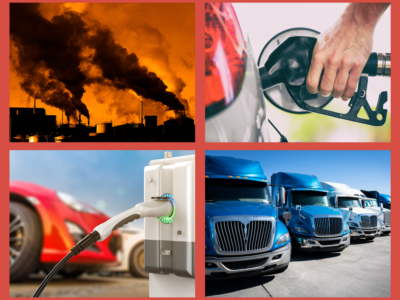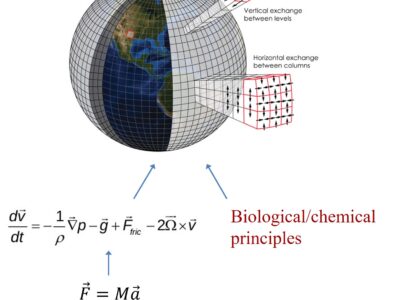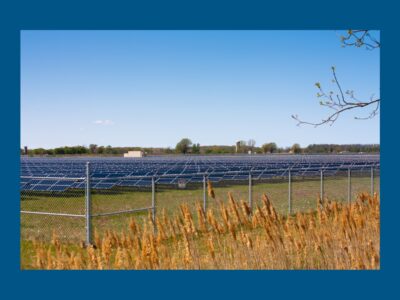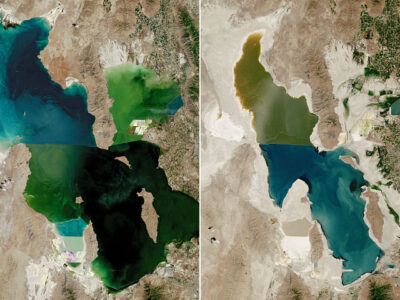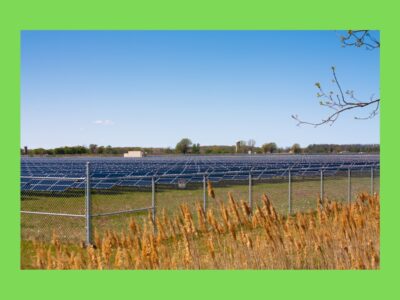Search Results for: feed
How to Grow a Victory Garden out of Trash
Private recycling subscription services are helping my family divert our waste, though I wish we didn’t need them.
While unelected billionaires and sycophant cabinet members are pretending to get rid of waste in Washington, I’ve declared war on waste, fraud, and abuse in my own Los Angeles home. My family is fighting food and plastic waste using a pair of recycling subscription services. Yes, I realize it’s just a small ripple in the …
Continue reading “How to Grow a Victory Garden out of Trash”
CONTINUE READINGHow to Commit to Decarbonization
Feedback effects can lock in decarbonization policies, for better and for worse
This is the fifth in a series of posts. The first post is here. The second post is here. The third post is here. The fourth post is here. Decarbonization is a long-term challenge, and it requires commitments to drive the investments required for innovation and deployment of non-fossil-fuel energy sources. But long-term commitments, which …
Continue reading “How to Commit to Decarbonization”
CONTINUE READINGThe Difficult Politics of Climate Change
How can we enact policy that is effective, resilient, and expands its ambition over time?
Climate change is a difficult problem to solve, politically. The costs of addressing climate change are born by current generations, but the benefits accrue to many generations to come. Addressing climate change might require people today to make significant sacrifices to benefit people around the world, as well as future generations. There are significant, powerful …
Continue reading “The Difficult Politics of Climate Change”
CONTINUE READINGCalifornia Must Not Abandon its Climate Leadership
California’s Low Carbon Fuel Standard has been successful. CARB should update the program without undermining its fundamental features.
On November 8, the California Air Resources Board, or CARB, is slated to consider approving amendments to California’s Low Carbon Fuel Standard. The program has been so successful in replacing high carbon petroleum-based fuels with lower emissions vehicle fuels that interest groups from all sides of the political spectrum have come forward to demand radical …
Continue reading “California Must Not Abandon its Climate Leadership”
CONTINUE READINGModel Uncertainty in Politics and Climate Policy
The polls could be systematically off, not just due to random error. That’s a worry with climate models as well.
Yes, your favored candidate could sweep the swing states, and yes, climate change could be more moderate than we now expect. But that shouldn’t give you much comfort on either issue, since the errors could equally be in the opposite directions.
Obviously, we’d like to improve our models, but that’s not always easy. In the meantime, the smart thing is to plan on the basis of the best models we have but avoid overconfidence about our predictions.
CONTINUE READINGArctic Futures: White Shield or Blue Economy
Multiplying proposals for ice restoration face geopolitical obstacles
Ice-thickening. Glacier curtains. Cloud brightening… Proposals for Arctic climate interventions seem to be multiplying by the day. The changing climate is not only shrinking ice caps and ice sheets, but also bringing much greater than average temperature rises in polar regions. These impacts particularly disrupt the lives and livelihoods of Arctic Indigenous Peoples. Arctic impacts …
Continue reading “Arctic Futures: White Shield or Blue Economy”
CONTINUE READINGCommunity Solar: Compensation
Who gets the money? Compensation mechanisms are where a lot of the power of these programs resides, but naturally, also the debate.
This post is co-written by Naomi Caldwell (J.D. ’24, UCLA School of Law). Two recent posts explored community solar through the lens of its many potential benefits. (Part One on systemwide benefits and Part Two on local and individual benefits.) Today’s post follows the money, exploring community solar compensation mechanisms. The question of who makes …
Continue reading “Community Solar: Compensation”
CONTINUE READINGElectric Shared Mobility:
Program Design Elements Can Produce More Equitable, Durable, and Successful Projects
Shared mobility—an umbrella term for any transportation mode shared among multiple passengers—has the potential to accelerate transportation electrification, air quality, and greenhouse gas reduction goals, meet the needs of underserved communities that most lack mobility access, and advance broader mobility equity goals. CLEE’s report, Electric Shared Mobility: California Lessons Learned for Equity in Program Design, …
Continue reading “Electric Shared Mobility:”
CONTINUE READING“Salt Lakes in Crisis: Legal Responses to Ecological Catastrophes”
Upcoming U.C. Davis Law Review Symposium To Provide Interdisciplinary Focus On Threatened Western U.S. Lakes
On Friday, September 20th, the student-run U.C. Davis Law Review will host a most timely conference examining an environmental crisis facing many of the American West’s iconic “terminal lakes.” That term refers to lakes that have no natural outlet. For many years, protracted droughts and human diversions from freshwater rivers and streams feeding those lakes …
Continue reading ““Salt Lakes in Crisis: Legal Responses to Ecological Catastrophes””
CONTINUE READINGCommunity Solar: The Systemwide Benefits
The debates over community solar program design are fascinating sites of struggle over which values should drive decision-making.
Electricity regulation has traditionally been defined by a relatively narrow public interest prerogative: ensuring just and reasonable rates for reliable electric service. The call to decarbonize, however, has injected a new diversity of values into the conversation. Transforming the electric power system to reduce greenhouse gas emissions is opening new opportunities to elevate values like …
Continue reading “Community Solar: The Systemwide Benefits”
CONTINUE READING




